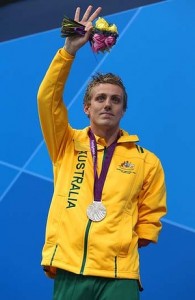The third of 4 special articles on Strategic, Business and Competitive Pressures impacting events and tourism
 I’ve alluded to some macro changes earlier. The other big demand and supply shifters – or disrupters – are new money, new technology and new players. All at once.
I’ve alluded to some macro changes earlier. The other big demand and supply shifters – or disrupters – are new money, new technology and new players. All at once.
China and the rest of Asia including India offer the greatest opportunities for tourism growth but Australia is unprepared for these markets in terms of language and cultural awareness training. ‘Place’ branding needs to be clever, we must differentiate our destinations, create a clear proposition, develop synergies and integration across industries, and create stories unique to the destination. Tourists’ perception is crucial in the tourism industry, therefore correcting or favourably changing a tourist’s perception of a business or a destination is vital. Even after so many inspired and entertaining advertising campaigns, Australia is still largely seen as sun, beach, desert – and in terms of icons, Sydney Opera House, Sydney harbour bridge and kangaroos.
The most important defining characteristic of major events is the nebulous environment they emerge into – a new location, new business culture, new criteria (possibly from the international governing body or the sports federations), people who are new to such events, new ideas, new goals for the event to meet and new wider city or national objectives to deliver; the view that there is plenty of time and ample local capacity to deliver and that knowhow is easy to capture.
On all those ‘how’ matters they are usually wrong, very wrong.
And so out of the uncertainty and chaos comes the opportunity – and the strength of knowledge and experience of Australians takes hold. This is the excitement of the chase!
Why do it? Why bother? In this international market we will not be able to keep out talent and skill from overseas. Take retail as an example… Costco, Zara, Williams-Sonoma. Look at the takeovers of major law firms. Look at the market access achieved by cruise operators, international hoteliers, once-Japanese now Chinese tourism businesses. We have been slow to see it coming and to respond. We have been slow to engage with counter-ventures and to find commercial means of sharing their spoils. We need to get into their backyards.
In classic strategic terms, we need to be rebuilding our local strengths. Let us be the first and best to address the changes in domestic tourism and the rapid changes in the mix of international visitors. Tourism gurus predict a large influx of new tourism from China and India, with current declines from Japan, EU and even the US difficult to reverse. By 2020 global tourism from China will be the 4th largest source of tourism. Australia’s export earnings associated with the visitor economy from Asia in 2020 will account for 55% of the overall increase in earnings ($10 billion) – and China will account for half of that.
So it behoves us to look at the interests and passions of those people, align with commercial interests and develop events that will deliver more value to all players. We need to be creative and seen to be so, not just reactive. We must bring a new notion of self-belief that goes way beyond our current reputation for excellence.
This article is based on a presentation, State of Play: Australian Events on the World Stage, delivered by Eric Winton to the Australian Event Symposium 2012 – Finding our mojo: Creativity, innovation and the business of events, 14-16 September 2012. The presentation explored strategic, business and competitive pressures impacting events and tourism.
Eric is director at New Millennium Business, providing strategic, marketing and business activation advice to events companies in Australia and going global, targeting opportunities overseas.
Our speciality is the business of events.






